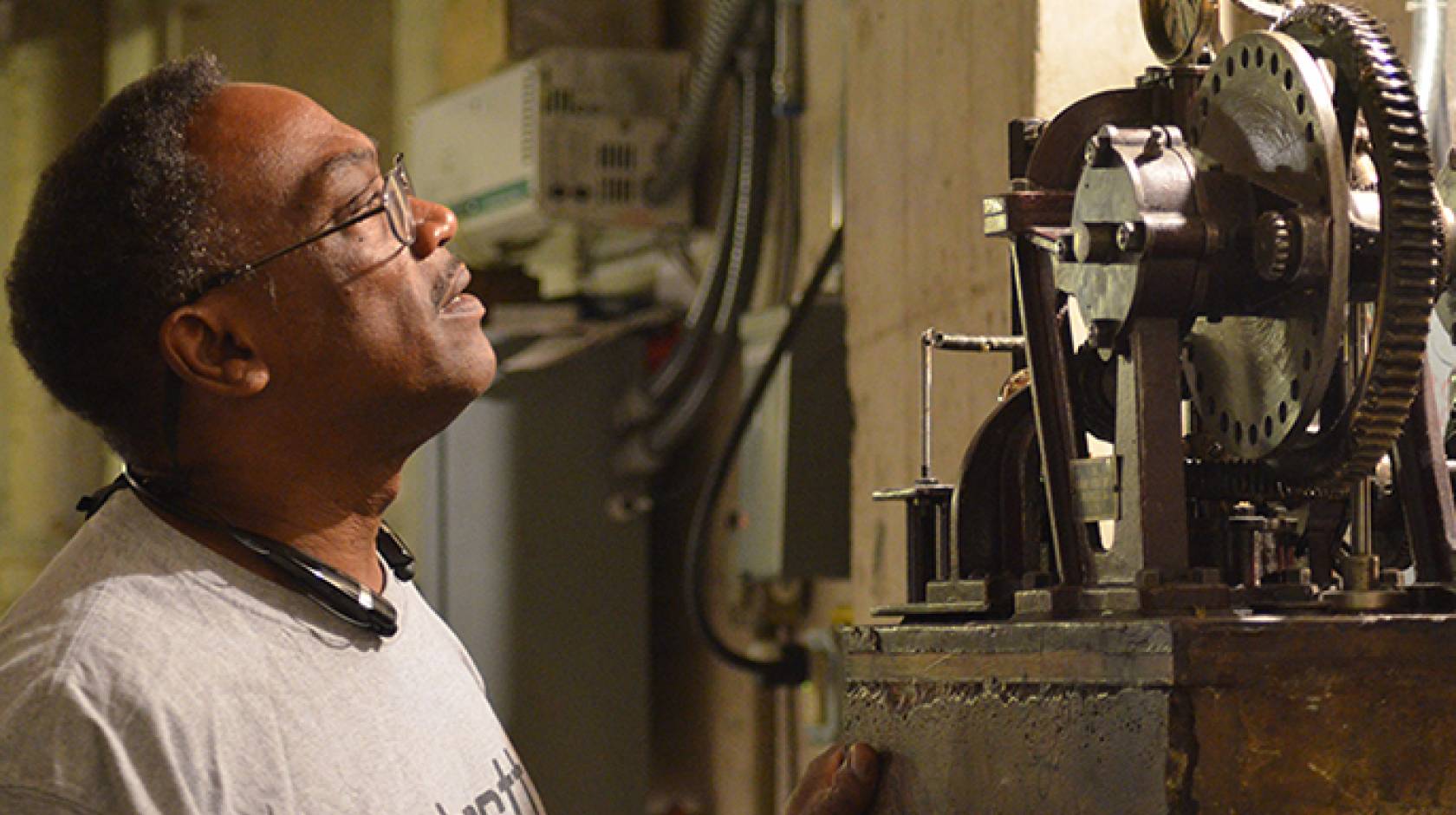Anne Brice, UC Berkeley

The Campanile clock tower is the campus’s North Star. At 100 years old and 307 feet tall, it’s a landmark everyone knows and trusts. But what happens when the clocks stop? There’s only one person to call: Art Simmons.
“Everybody in Berkeley watches those clocks,” says Simmons. “Not just the people on campus. So when the clocks stop, the whole city knows about it and it doesn’t look good.”
Simmons started working at Berkeley as an electrician 20 years ago. Because the person who took care of the clocks had just retired, Simmons inherited them as his responsibility.
“I had no choice, it was in my zone,” he says. “They said, ‘It’s your baby, keep it going.’ So it was a lot of pressure to keep those clocks running and keep them running right.”

When the clocks stop, Art Simmons is the first person the campus calls. “They even called me on vacation one time!” he laughs.
Credit: Anne Brice/UC Berkeley
The Campanile clock installation isn’t your run-of-the-mill setup. Because the clocks are so old and so big — they’re 17 feet in diameter — finding the right parts and fixing them isn’t an easy task. Over the years, Simmons has had to figure out tricks to keep the clocks going and has become the go-to expert.
“They didn’t want everybody touching those clocks,” he says, “because push or break something, you can’t go get this part. It’s broken. So they’d save it for me and I’d go up and get it going.”
The Campanile has four big clocks that each face a different direction — north, south, east and west. About a decade ago, the hands on the west-facing side — the side that weathers most of the night’s cold bay fog — kept stopping. Simmons would go up and get the clock going, but every couple of months it would stop again. Simmons knew something was wrong.
As it turned out, the bearings — the rings that allow a clock’s hands to rotate —hadn’t been changed on the west-facing clock in decades because technicians couldn’t get the hands off. So they left the old bearings on that clock, and changed the bearings on the other three.

Credit: Steve McConnell/UC Berkeley
“They had never changed the bearings and it got worse and worse and worse, it was just got so tight, it was just wearing the motor down, trying to make it turn.”
So the campus hired a steeplejack, who hung from ropes hundreds of feet in the air for the whole day, trying to get the hands off. Eventually, he used a blowtorch to cut them off, and then changed the bearings and welded the hands back on.
The problem had been solved for the time being, but Simmons still had to figure out how to make sure the bearings didn’t get too tight again.
So he rigged up a heater for the shaft. The heater was actually just a normal light bulb you can buy at any store. He installed it right underneath the shaft — the long bar that the clock arms attach to — and the light stays on all the time, keeping the shaft warm so the bearings don’t tighten up again and can be replaced when needed.
“It gets the job done,” he laughs. “Every now and then, I go up and change that light bulb. I kinda feel good about that. It’s something I thought of and it worked.”
Simmons says the clocks are made so well, he knows their gears will still be churning long after he’s gone.

